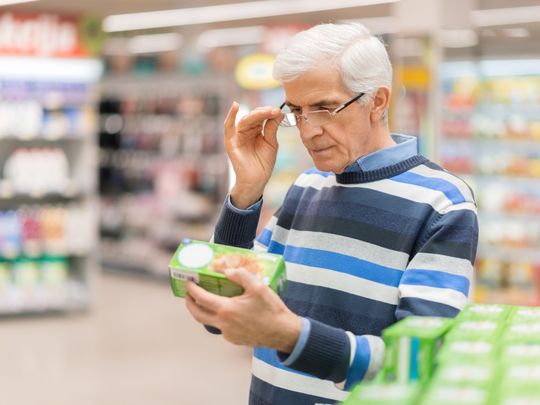Call it grocery shopping 2.0.
If you’re lactose intolerant, counting calories, or trying to fill your kitchen with gluten-free foods, you’ll soon be able to use your smartphone to scan a grocery store shelf and pinpoint items that specifically meet your dietary needs.
Swiss technology company Scandit expects some U.S. grocery stores to roll out the new feature in the next six to nine months. Shoppers at those supermarkets will be able to narrow down what they’re looking for in an app similar to how they filter products when buying and browsing online.
Retailers can decide what types of information they want to offer. When customers open the store app, they will see different categories – such as lactose or nut free – and can click on what they’re interested in.
Then, when they aim their smartphones at a grocery case, icons will pop up on the device’s screen, hovering over items that meet their dietary requirements.
“Standing in front of shelves filled with hundreds of items can be an intimidating experience,” Scandit CEO Samuel Mueller said. “Instead of picking the best item, many shoppers just give up and pick the most familiar one. (Augmented reality) filtering enables shoppers to quickly see beyond the shelves and into the products themselves so they can find exactly what they want in the most efficient way.”
CVS debuts new concept: CVS introduces new concept store with more health care, less retail
Robots and more change shopping experience: The store of the future is already here
The ability to search ingredients is the next leg in the race toward the store of the future, at a time when the Mall of America has used a hologram as a virtual greeter and Home Depot customers can type an item into the store’s app to get a map that leads them to what they’re looking for.
Technology has played a particularly vital role in the grocery store space, tracking inventory and making life easier for shoppers who want to quickly fill their carts, then get on with their day.
“It’s becoming tremendously important and will probably change, over the next decade, the entire grocery shopping experience,” says Bill Bishop, the head of Brick Meets Click, a consulting and research firm focused on the evolution of food retailing.
Already, at several Schnuck grocery stores, a robot named Tally checks prices, scans shelves and alerts employees if an item needs to be restocked. And at Amazon Go stores, which have opened in Seattle, Chicago and San Francisco, customers can pay for milk, bread and other foods as they shop, cutting out the need to wait in a line or deal with a cashier.
Bezos’ text leak: Brother of Lauren Sanchez reportedly is source of Bezos’ leaked texts, photos
Less money, more problems: What will your tax refund be? So far, they’re smaller by an average of $170
Scandit’s technology reflects another trend in which shoppers are demanding as much information as possible about the products they’re buying, from ingredients to how far the items travel to get to market.
In particular, “younger people … (are) used to turning to their phones for these kinds of answers,” Bishop says.
The scanning technology is “an example of improved transparency and more detailed communication of what a product really is all about … You don’t have to pick up every package and read the back of it and figure out what it means.”
Coca-Cola’s new flavor: Coca-Cola debuts Orange Vanilla, its first new flavor in more than a decade
While Bishop envisions a landscape a decade from now in which many household staples are ordered online, and grocery stores are smaller and cashier free, others believe the push to the future will have as many fits as starts.
“No chain has so far made enormous advances by using technology. However, a lot of retailers are testing new things,” Neil Saunders, managing director of retail consultancy GlobalData, says.
“Some of these advances are likely to come to nothing. They will be too expensive, provide too little return or will prove to be unpopular with shoppers. However, some will gain ground and will help to reshape the grocery business in the years to come.”
Read or Share this story: https://www.usatoday.com/story/money/2019/02/18/grocery-shoppers-soon-able-use-app-scan-diet-needs/2837323002/

